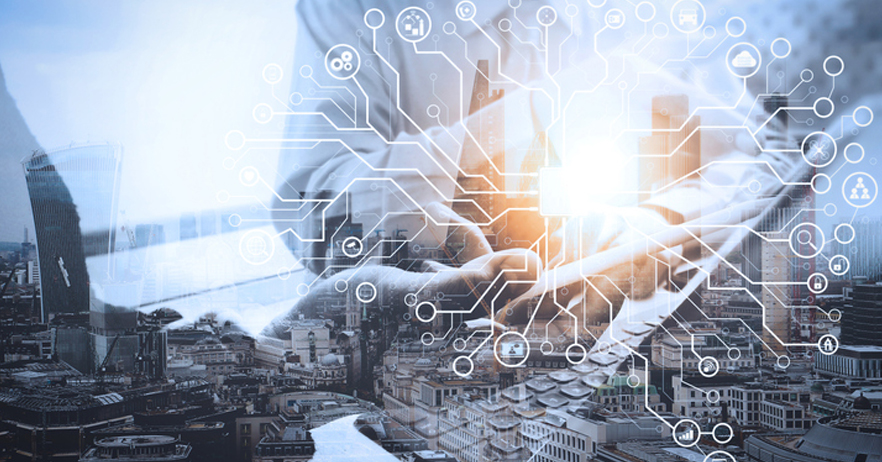This is a good time for enterprises to explore possibilities and pave the way for more innovative measures that will lead to improved efficiencies.
The most profound technologies are those that disappear. They weave themselves into the fabric of everyday life until they are indistinguishable from it. - Mark Weiser
Weiser's version of ubiquitous computing was premised on creating environments involving computing and communication capability, which seamlessly integrated with end users. Over the past few decades advancements in technologies have had a great impetus on human lives. While there have been numerous debates on the benefits and drawbacks of AI, it is a dominant reality, we need to acclimatize ourselves with.
During the year 2018, companies made efforts to leverage technology to add value to clients, employees, and stakeholders. Technology advancements, driven by artificial intelligence and cloud computing will continue to dominate 2019 in redefining enterprise competitive advantage and create a base for future enterprise progression. Here are a few technology trends we foresee, in the upcoming year.
Cognitive Futures
The Cognitive Futures paradigm is one of the critical pillars on which the future of enterprise competitive advantage will be decided. Embedding sensors, controllers, devices and data into the physical spaces of human beings to facilitate seamless interaction is creating several new possibilities. Just in time computing and storage, using cloud-based computing platforms and services are resulting in the commoditization of infrastructure thereby enabling enterprises to better optimize computing and storage power.
“Embedding sensors, controllers, devices, and data into the physical spaces of human beings to facilitate seamless interaction is creating several new possibilities.”
By embedding intelligence into the fabric of everyday life, Cognitive Futures is making it imperative for enterprises to reach their end users through a multitude of devices and interaction channels. Therefore, it is critical to focus on employing AI driven super-intelligence for innovative solutions and business models with reduced time to market, for delivery through data-driven insights by analyzing historical enterprise behavior, data, and collective intelligence created across various customer touch points and external partners.
Predictive intelligence and multi-structured data-driven Innovations
New sources of structured and unstructured data are being generated at an exponential rate from embedded sensors, data about physical spaces of human beings, discussion forums, social networks, data from mobile phones, etc. Digital enterprises are drawing inferences and key decision points by analyzing this data about their customers, competitors, vendors, markets, products as well as services.
Enterprises of the future will need to sense and respond to the exponential growth in data, captured from various sources. They will also witness unparalleled technology adoption with Digital Intelligent Ubiquitous Computing Systems consisting of human and machine networks acting as the foundation for business and technology architectures. Such systems will have the end user at the focus, with various technologies, devices, and networks facilitating seamless computing, communication, collaboration as well as commerce related functionalities to the end users.
Hyper-personalized Customer 360
360-degree hyper-personalization will be the core focus for enterprises in 2019 as firms are attempting to provide customized solutions to their end users. Therefore, enterprises will feel the need to correlate customer data footprints from across multiple interaction channels and build an accurate customer profile with product recommendations specific to the channels of interaction.
The driver for this is to integrate multiple customer touch-points throughout the process, resulting in a lack of personalization, with each customer handoff resulting in a unique conversation. This involves complex event processing which co-relates customer demographics and transactions data, Call Center data, web browsing behavior data, online chat data, email campaigns data such as click-through rates, Display Advertising data, Voice data etc.
Marketing is one of the biggest areas to be impacted by the emergence of multi-channel consumer interactions. Organizations can create customized experiences across multiple customer touch points by co-relating customer transactional and behavioral data using AI driven techniques such as text analytics, natural language processing as well as social network analysis by leveraging hyper-personalized Customer 360 approaches.
While technologies like automation, artificial intelligence, machine learning, deep learning, and robotics have dominated the technology narrative for 2018, it is imperative to leverage the same across business verticals and functionalities to deliver relevant and innovative solutions. This is a good time for enterprises to explore possibilities and pave the way for more innovative measures that will lead to improved efficiencies.
Dr. Jai Ganesh is Senior Vice President and Head of NextLabs at Mphasis
This article was originally published on CIO.in as part of the IDG Contributor Network. Click here for the article.

